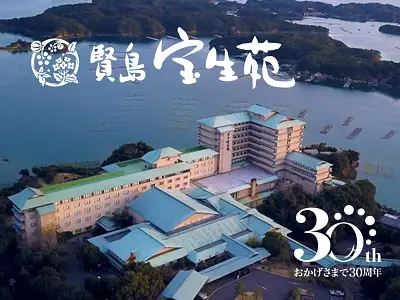北勢地区にまたがる七つのパワースポット!?伊勢七福神を巡ろう!【後編】
掲載日:2022.01.14
前編に引き続き、三重県内でも七つある七福神霊場(しちふくじんれいじょう)の内の一つ、「伊勢七福神」を巡ります。伊勢七福神とは桑名市、四日市市、鈴鹿市、亀山市にある七つの寺院で構成された昭和五十八年に開創された霊場です。今回もたくさんの御利益(ごりやく)のある伊勢七福神をご紹介します。
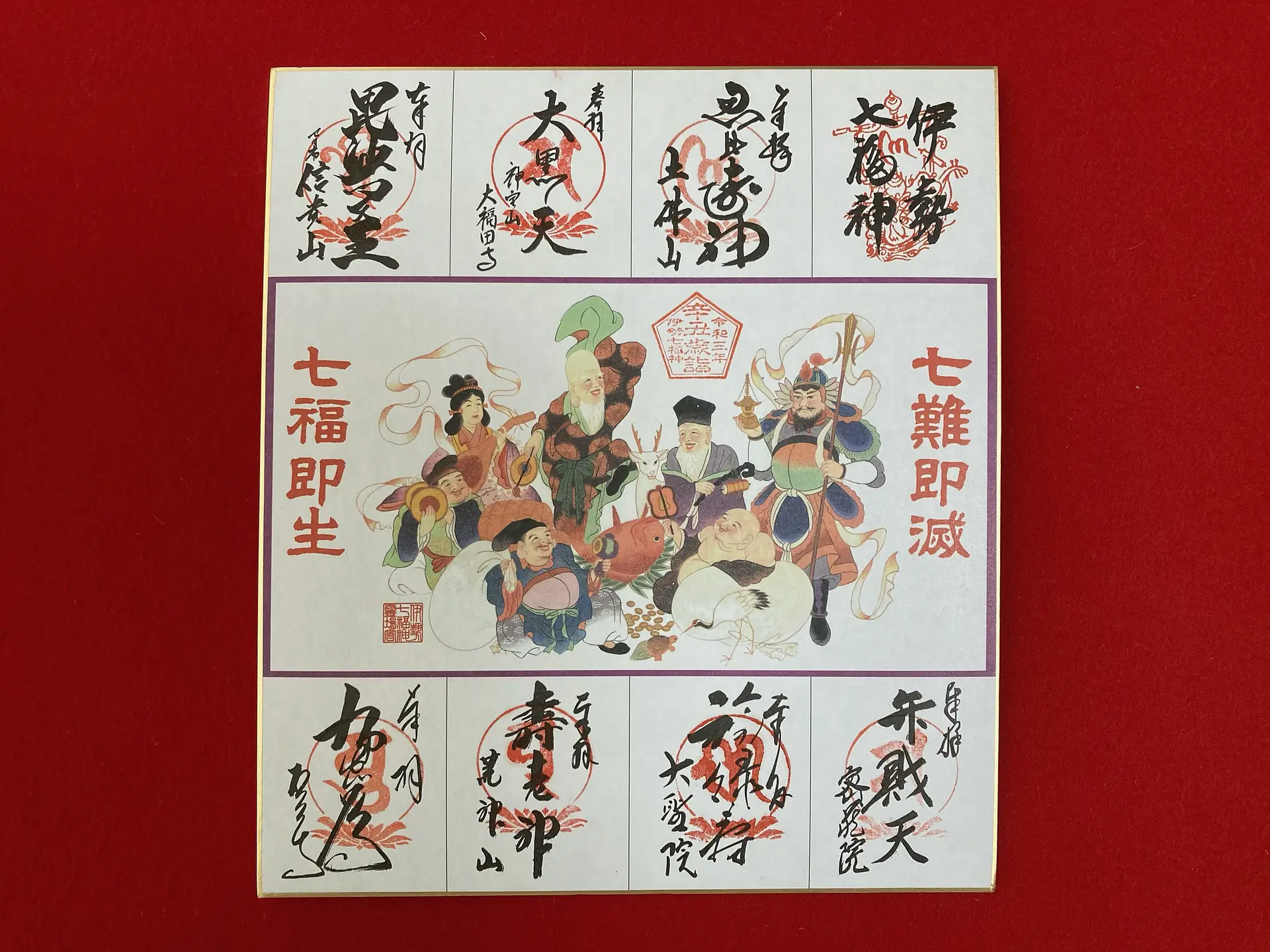
◆記事作成:MAMMY(マミー) #みえ旅カメラ部
僧侶と写真家、二足の草鞋を履く僧侶フォトグラファー
鈴鹿市在住 カメラ歴:Nikon一筋13年
最近、カメラ人生の中で初めてストロボを購入しました!
こんにちはMAMMYです。皆さん、七福神って知っていますか?そうです、宝船に乗って福をもたらしてくれる恵比寿神(えびすしん)、大黒天(だいこくてん)、毘沙門天(びしゃもんてん)、弁財天(べんざいてん)、福禄寿(ふくろくじゅ)、寿老人(じゅろうじん)、布袋尊(ほていそん)の七柱の神様達です。
しかし、この七柱の神様が日本の神様、インドの神様、中国の神様に僧侶といった宗教も出身地も異なる神様たちだということまでは知らなかったのではないでしょうか?今回はそんな七福神の御利益やプロフィール、お参りの仕方をご紹介したいと思います。
▼目次
・伊勢七福神とは(前編記事へリンクしています)
・お参りの仕方(前編記事へリンクしています)
・蟹築山(かにちくざん)密蔵院(みつぞういん)
・無動山(むどうさん)大聖院(だいしょういん)
・高神山(こうじんやま)観音寺(かんのんじ)
・那智山(なちさん)石上寺(せきじょうじ)
・まとめ
蟹築山(かにちくざん)密蔵院(みつぞういん)
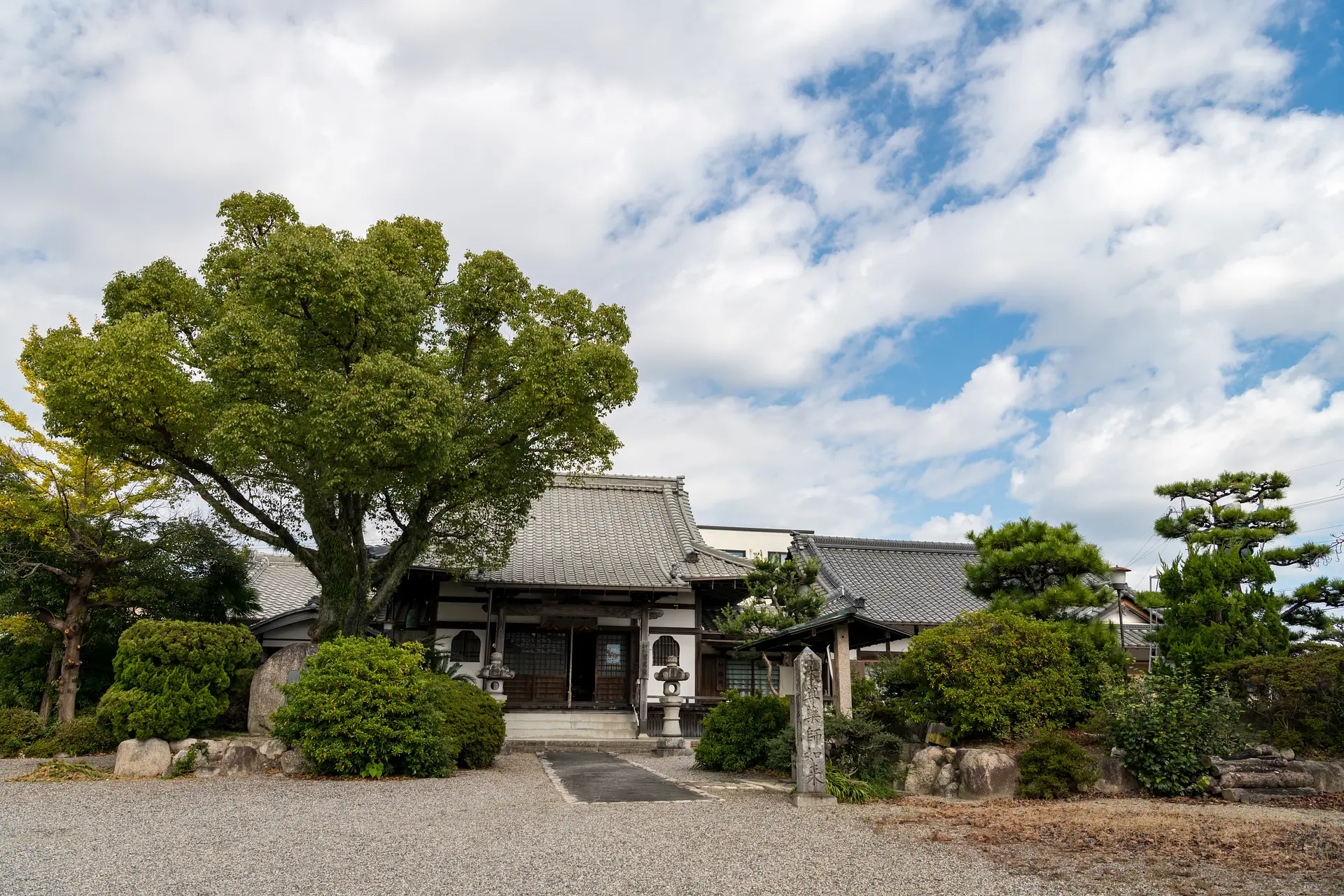
大治田(おばた)の薬師さんと親しまれている密蔵院。ご本尊様は「かに薬師」とも呼ばれています。
高野山真言宗
本尊 薬師如来
御真言 おん ころころ せんだり まとうぎ そわか
七福神 弁財天
御真言 おん そらそば ていえい そわか
御利益 技芸上達、財運海運など
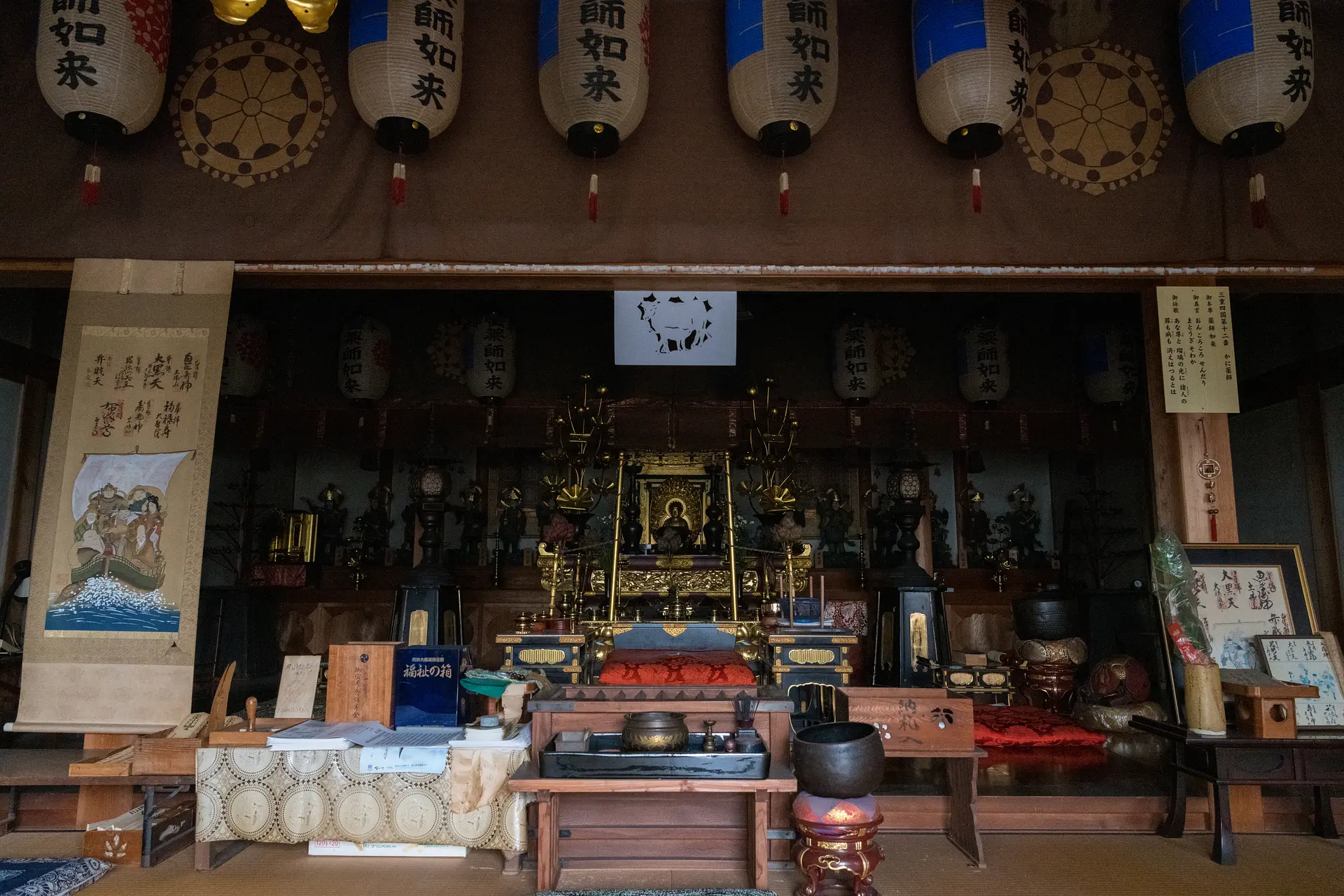
本堂にはご本尊様の他に、日光、月光菩薩、十二神将が安置されています。
ご本尊様は秘仏となっているため、仏像を背負って来たと云われる蟹の甲殻と一緒に厨子の中で安置されていますが、正面に見える仏様が「御前立(おまえだち)」といって、見えない仏様の代わりにお姿を見せてくれています。
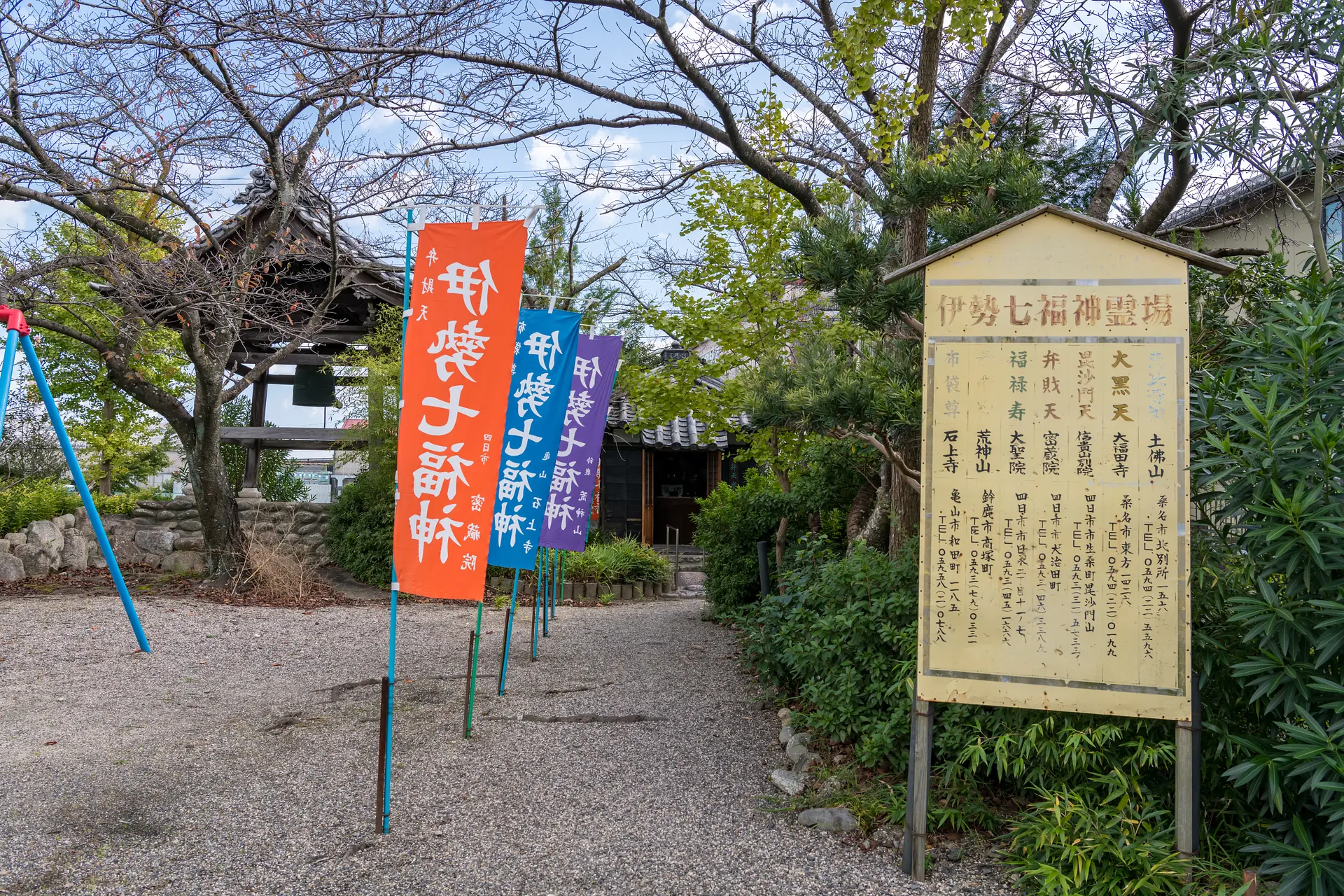
七福神は、境内に入ってすぐ右の奥に祀られていました。
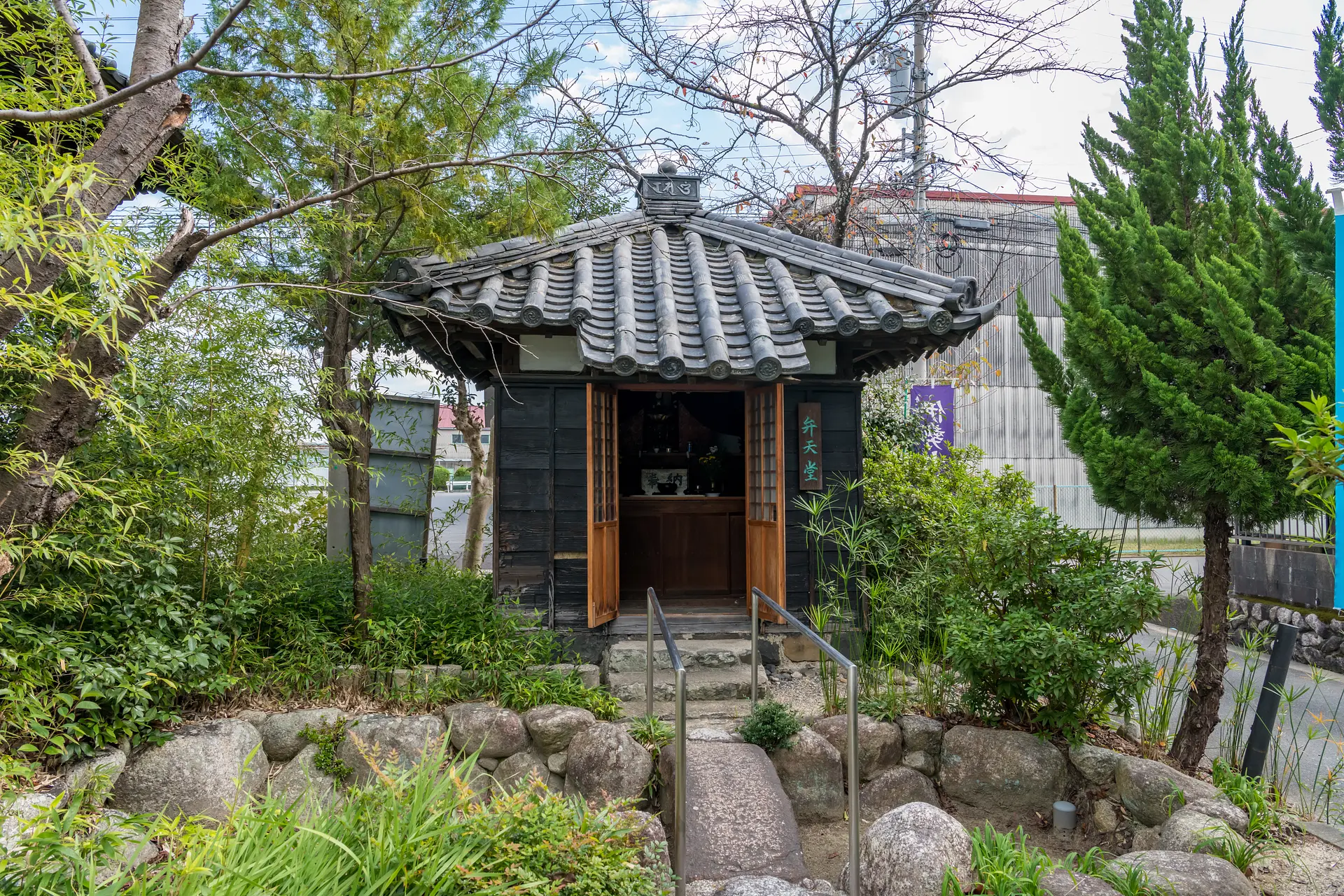
屋根が本瓦葺きの立派なお堂で、手前の池には橋が架けられています。
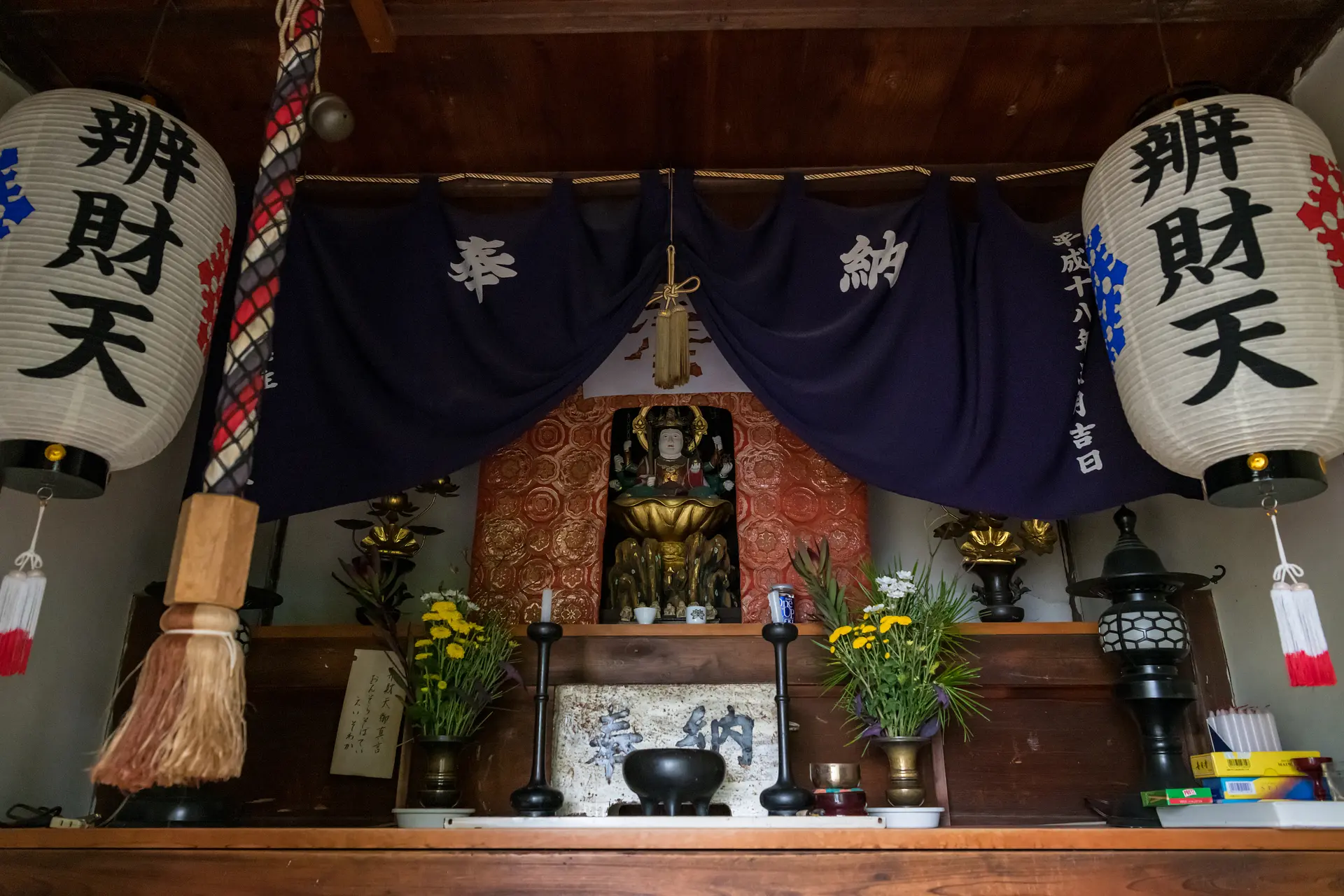
こちらで祀られている弁財天は、元はインドの神様で水に関係する神様。七福神の中では唯一の女神様でもあられますね。
よく知られる琵琶を持ったお姿ではなく、一面八臂(いちめんはっぴ)といって、一つの顔に八本の腕があり、手には様々な武器を持つお姿をされています。ですので武運長久の御利益もあるそうです。
無動山(むどうさん)大聖院(だいしょういん)
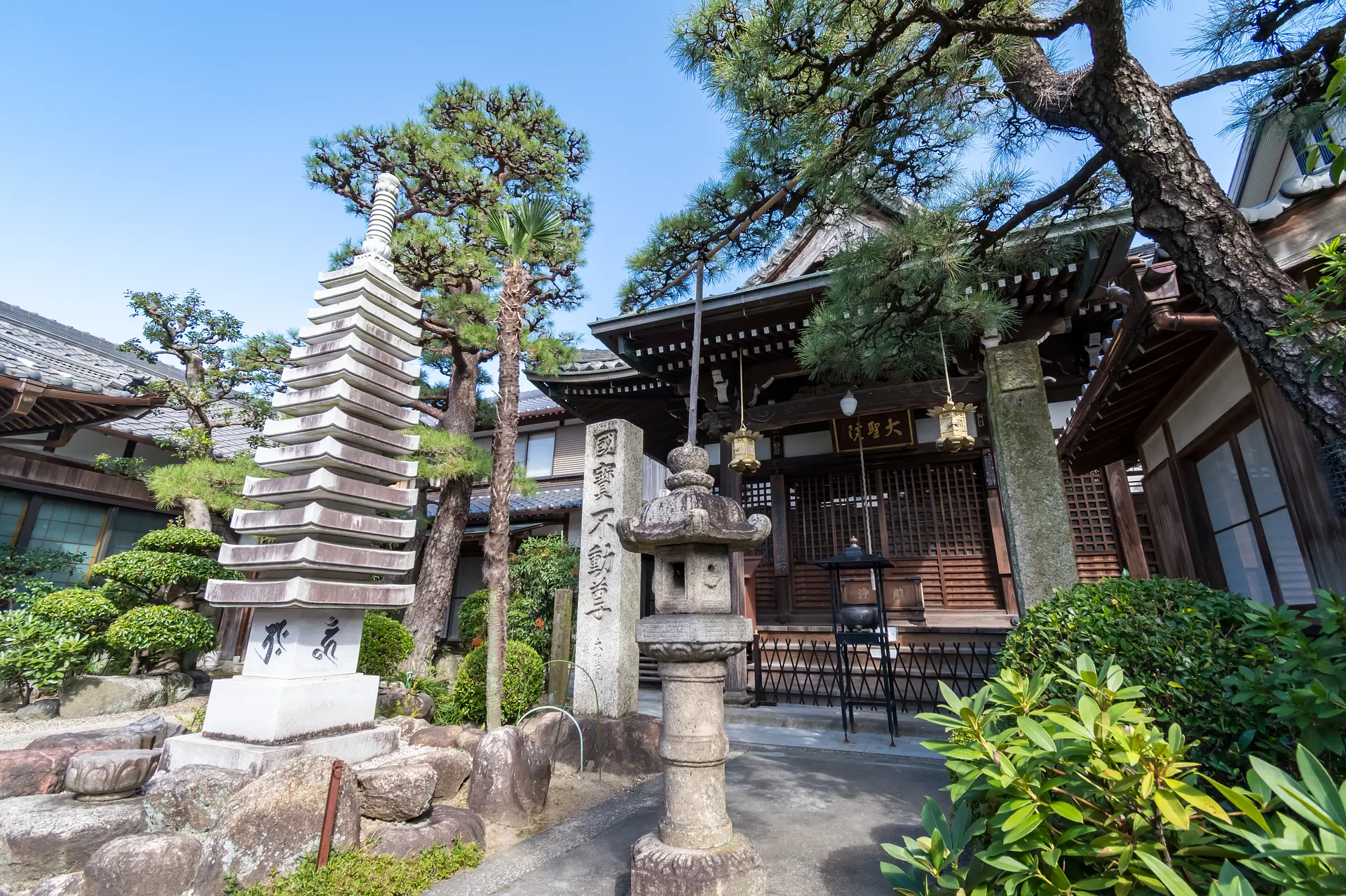
住宅地の中にひっそりと佇む大聖院。境内はとても綺麗に整備されていて「日永のお不動さん」と親しまれています。
真言宗醍醐派
本尊 不動明王
御真言 のうまく さんまんだ ばざらだん せんだ まかろしゃだ そはたや うんたらた かんまん
七福神 福禄寿
御真言 おん まかしり そわか
御利益 招徳人望 延命長寿など
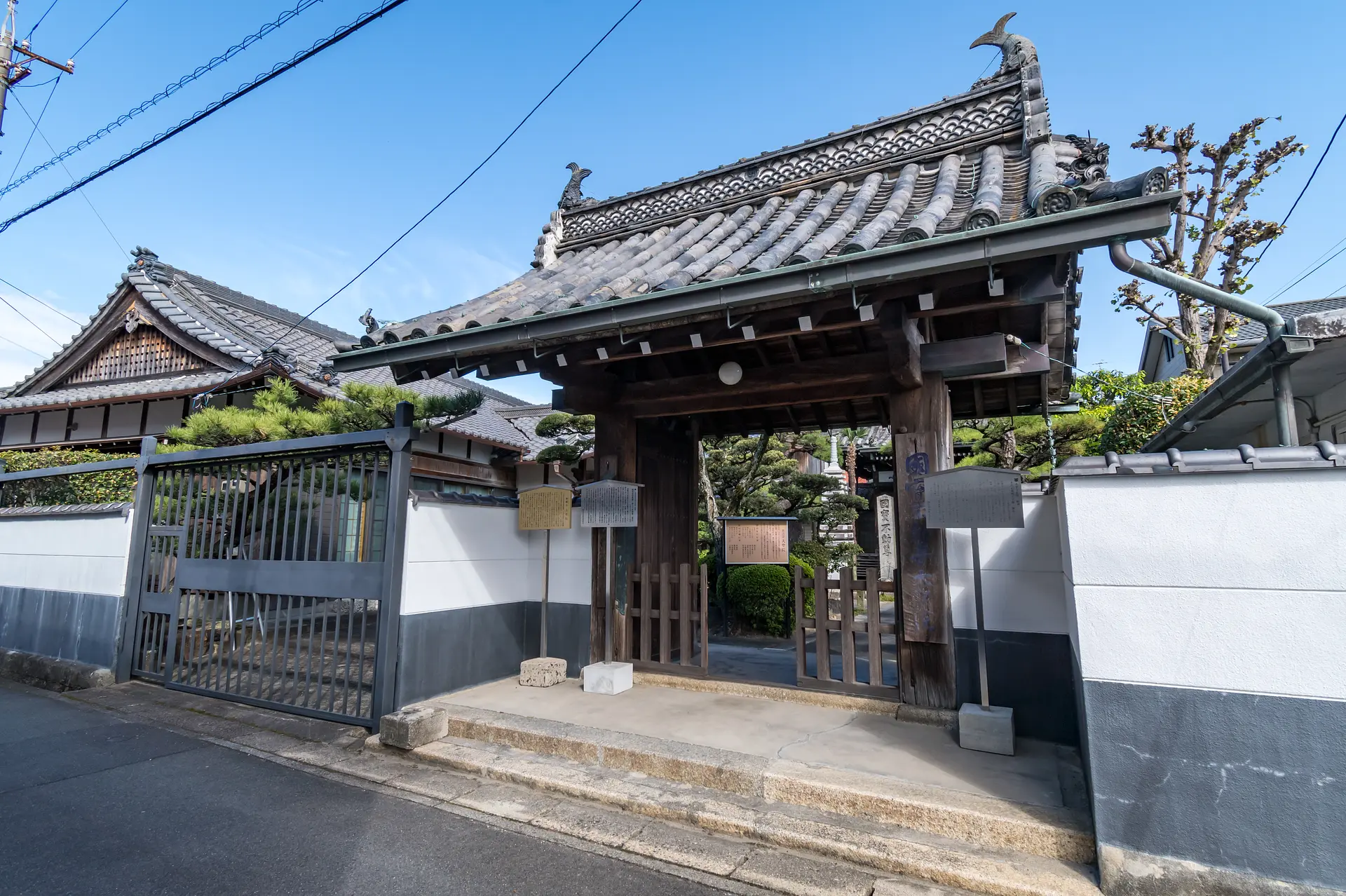
本瓦葺きの立派な山門ですね。駐車場は割烹旅館太田館の隣にあります。
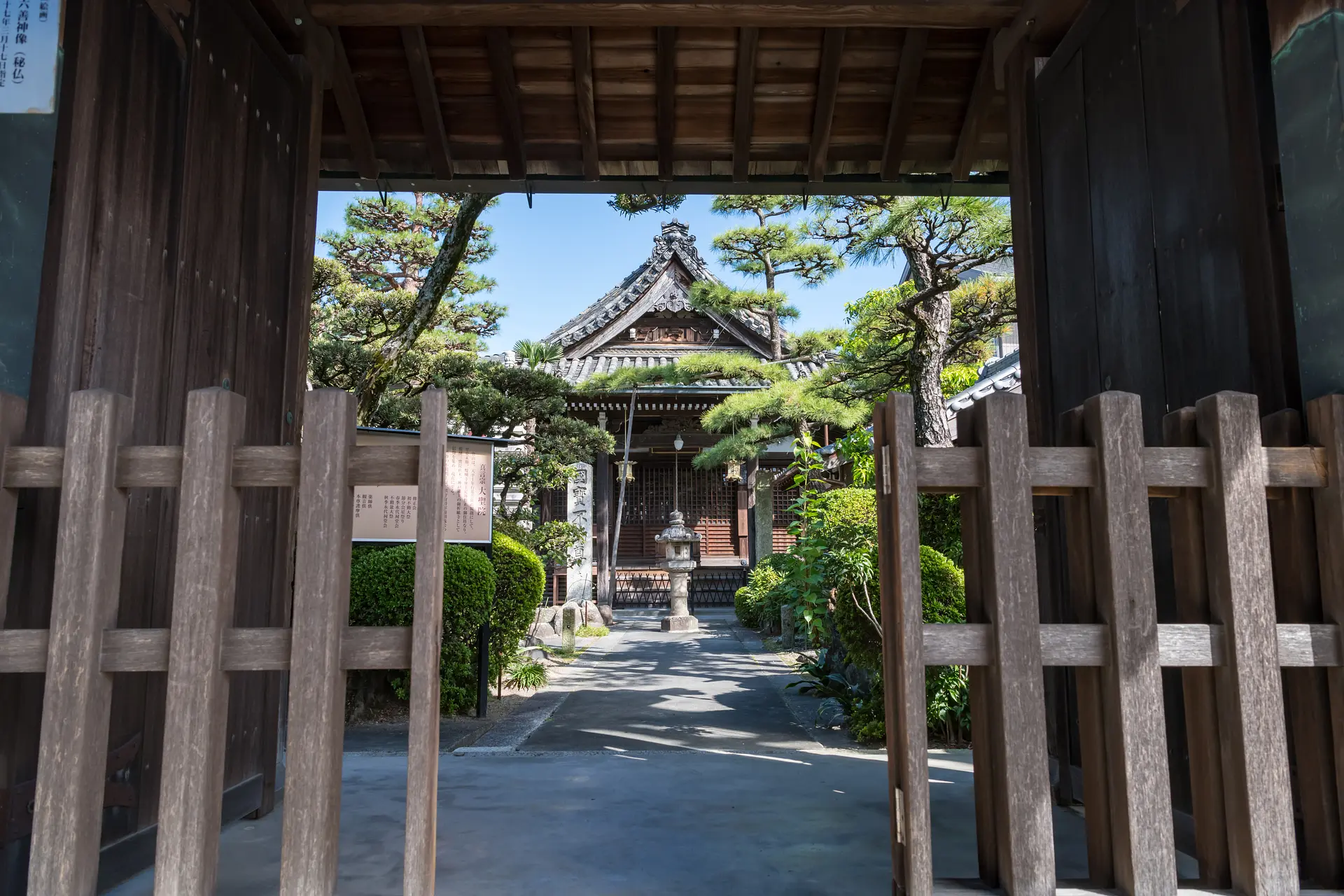
境内の木々も剪定が行き届いています。
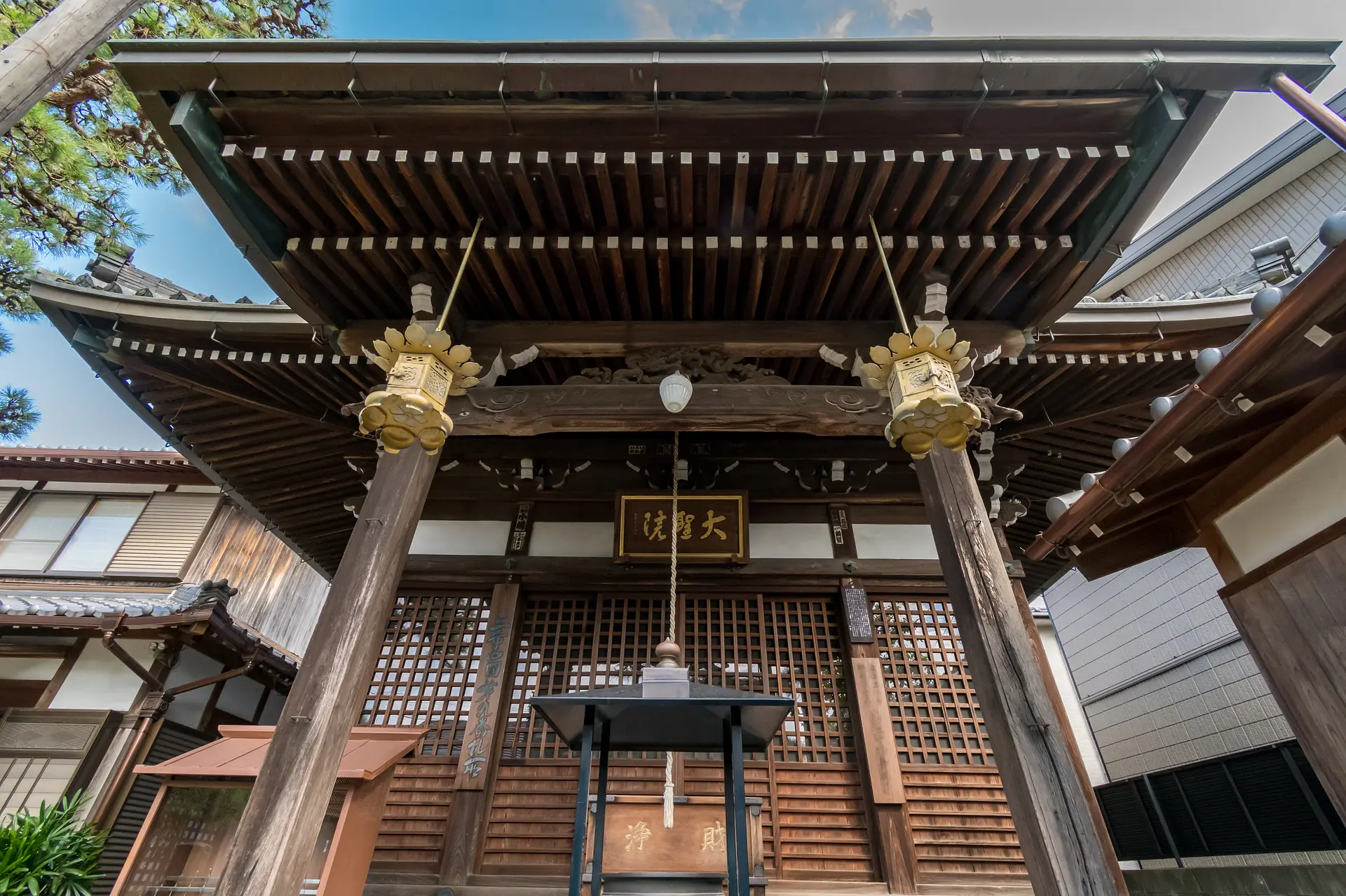
国指定重要文化財であり、源頼義公の念持仏(ねんじぶつ)であった不動明王が本尊秘仏として安置されています。なお、本堂は立ち入り禁止の為、お参りは本堂前からとなります。
七福神の福禄寿も堂内に祀られているためお姿を見る事は出来ません。中国の仙人に由来する長寿の神様「福禄寿」は名前の通り、「福」は幸福、「禄」は財宝、「寿」は長寿を表しているそうです。
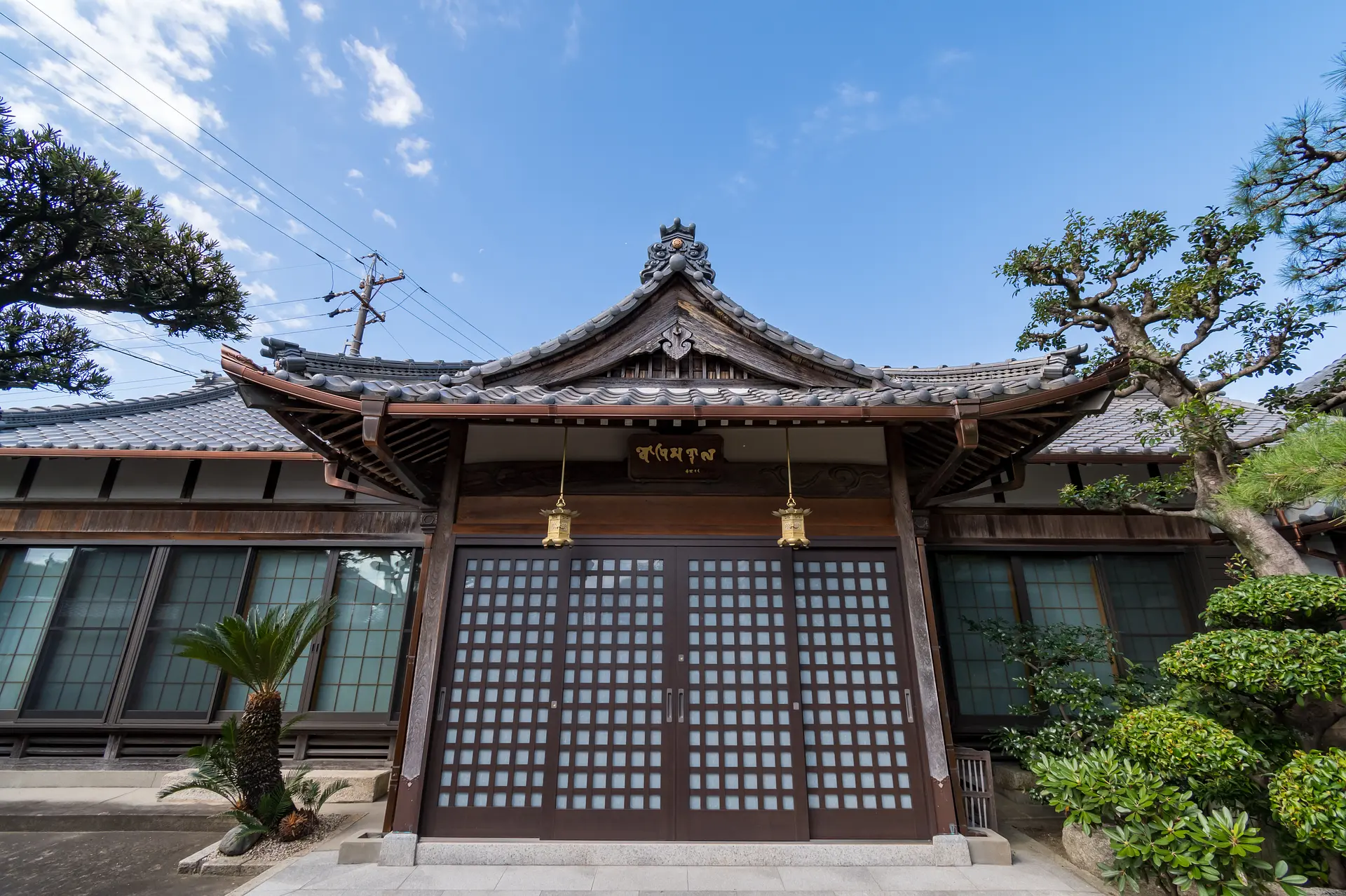
こちらは客殿、額には梵字で「ボウヂマンダヤ」と書かれています。
これは菩提道場という意味ですが、分かりやすく言えば仏道を修行する場所ということです。
高神山(こうじんやま)観音寺(かんのんじ)
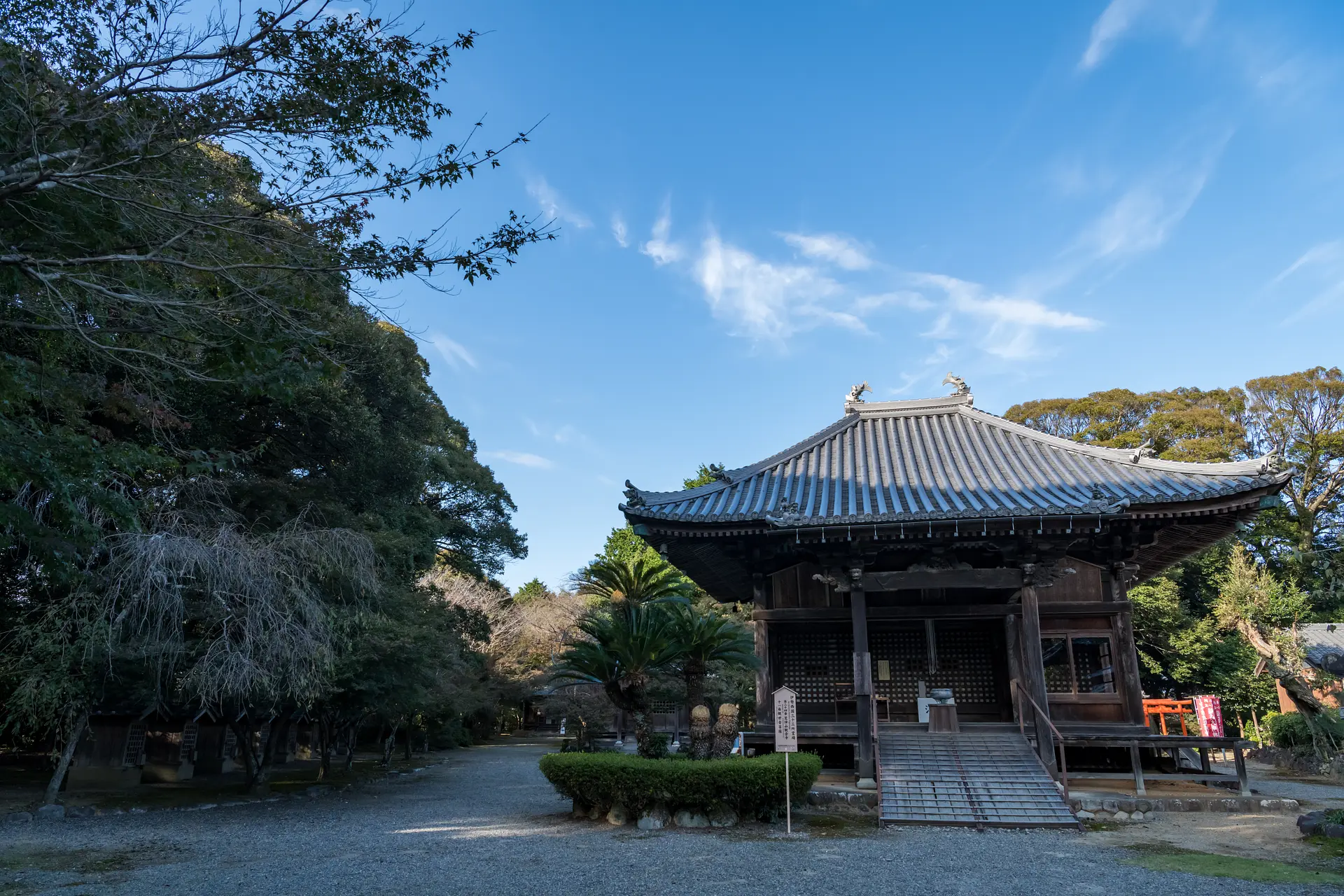
講談や浪曲で取り上げられた博徒同士の縄張り争い「血煙荒神山(ちけむりこうじんやま)」は、まさにこの地で起きたものであり、清水次郎長と兄弟の盃を交わした吉良の仁吉が亡くなったのは有名なお話です。
また、江戸幕府3代将軍・徳川家光の乳母である春日局(かすがのつぼね)とも所縁の深いお寺です。
真言宗御室派
本尊 十一面観世音菩薩
御真言 おん まか きゃろにきゃ そわか
七福神 寿老神
御真言 おん ばざら ゆせい そわか
御利益 福寿開運 延命長寿など
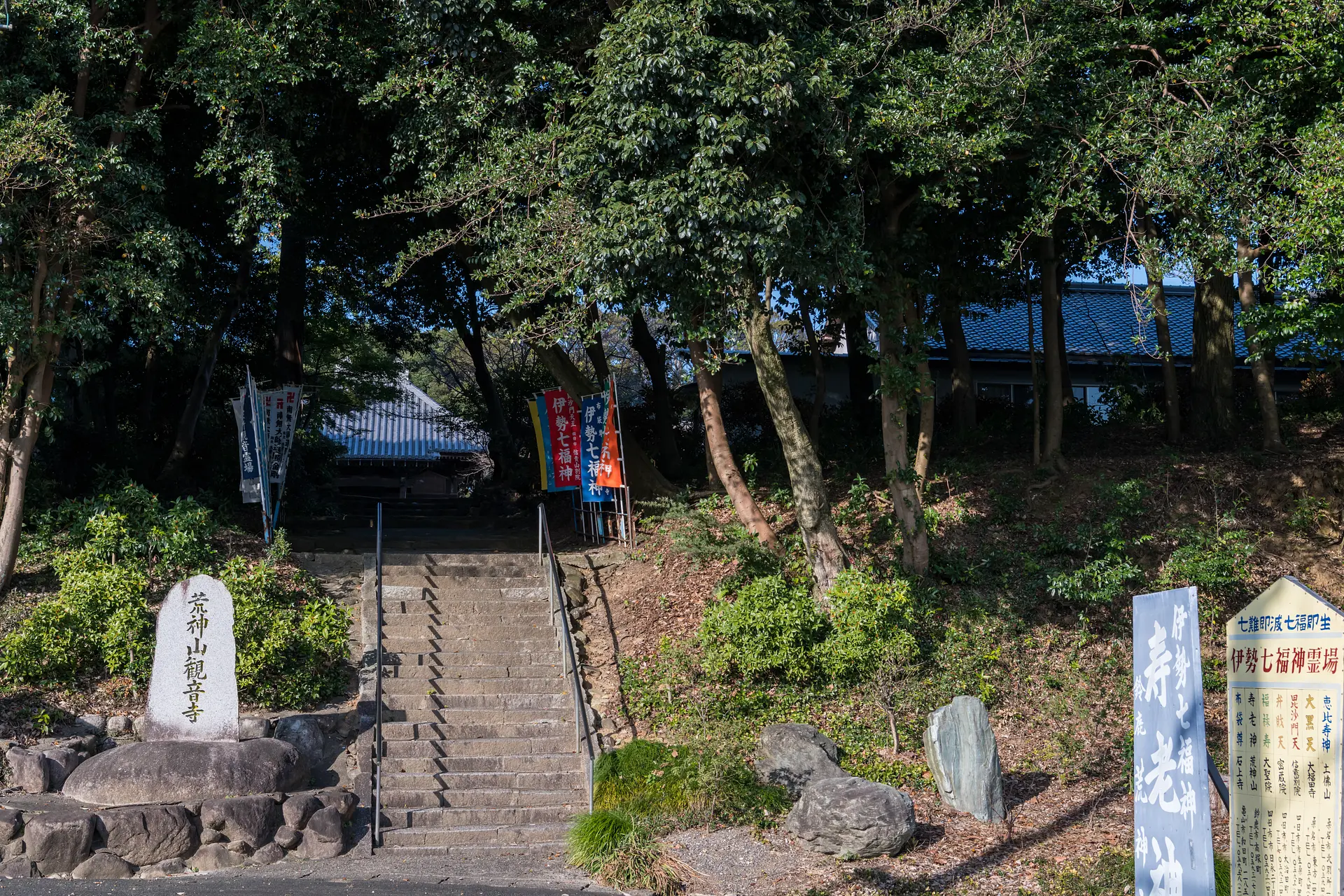
境内は椎(しい)の大木に囲まれており、拙僧も三十数年前に遠足で椎の実を採って帰り、家で炒って食べた記憶が微かに残っています…。(笑)
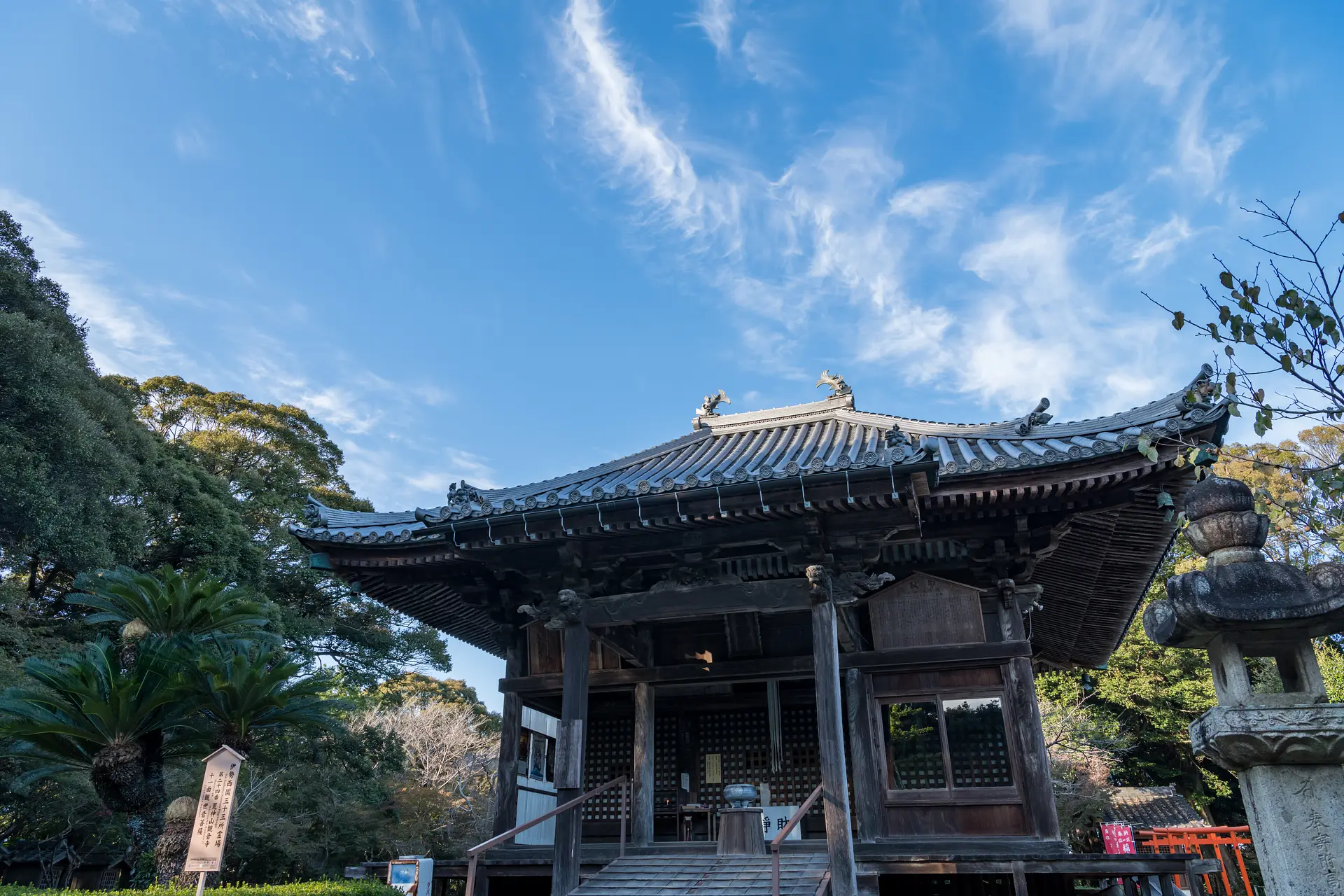
駐車場から石段を上がって真っ直ぐ進むと本堂があります。
血煙荒神山の舞台となるだけに、勝負事に関する御利益でも有名です。
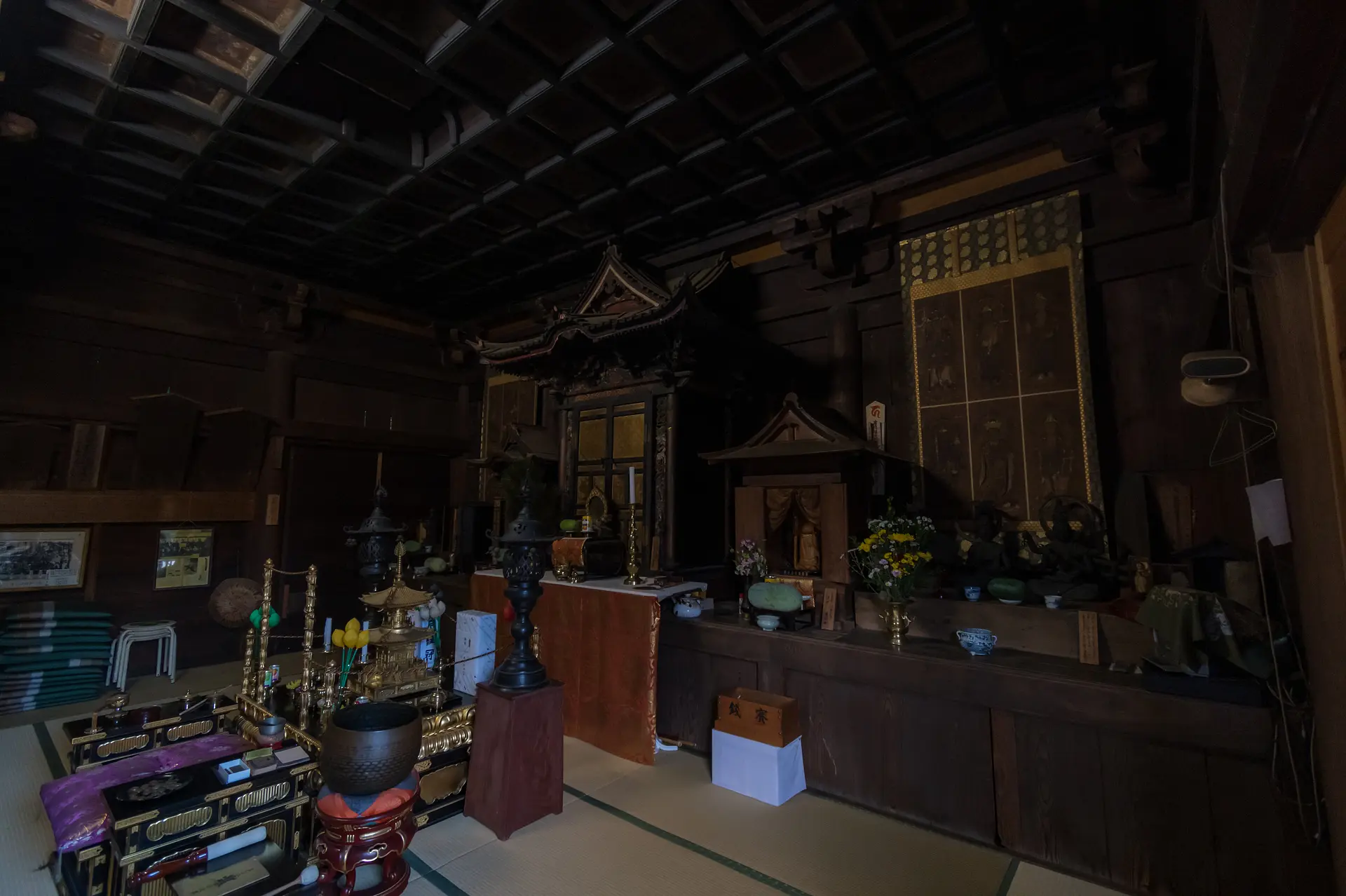
こちらは本堂の内陣です。通常は本堂正面での参拝となりますが、今回は特別に案内して頂けました。
ご本尊様は、十一面観世音菩薩様で秘仏となっています。
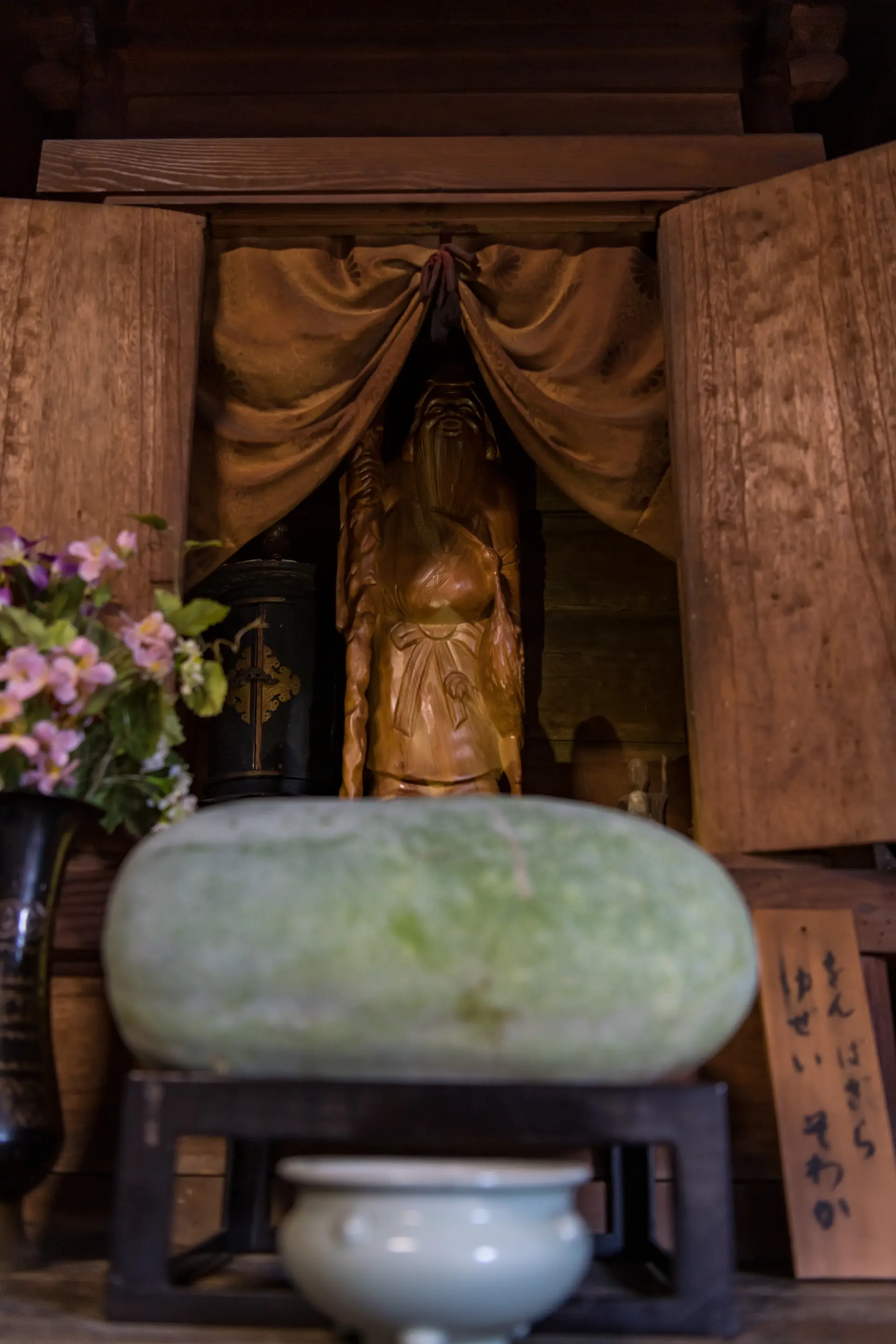
ご本尊様の厨子の右側には、寿老人(じゅろうじん)が祀られています。
中国の伝説上の人物で、道教における神仙、南極星の化身とも云われています。長寿を授けてくれる七福神の1人です。
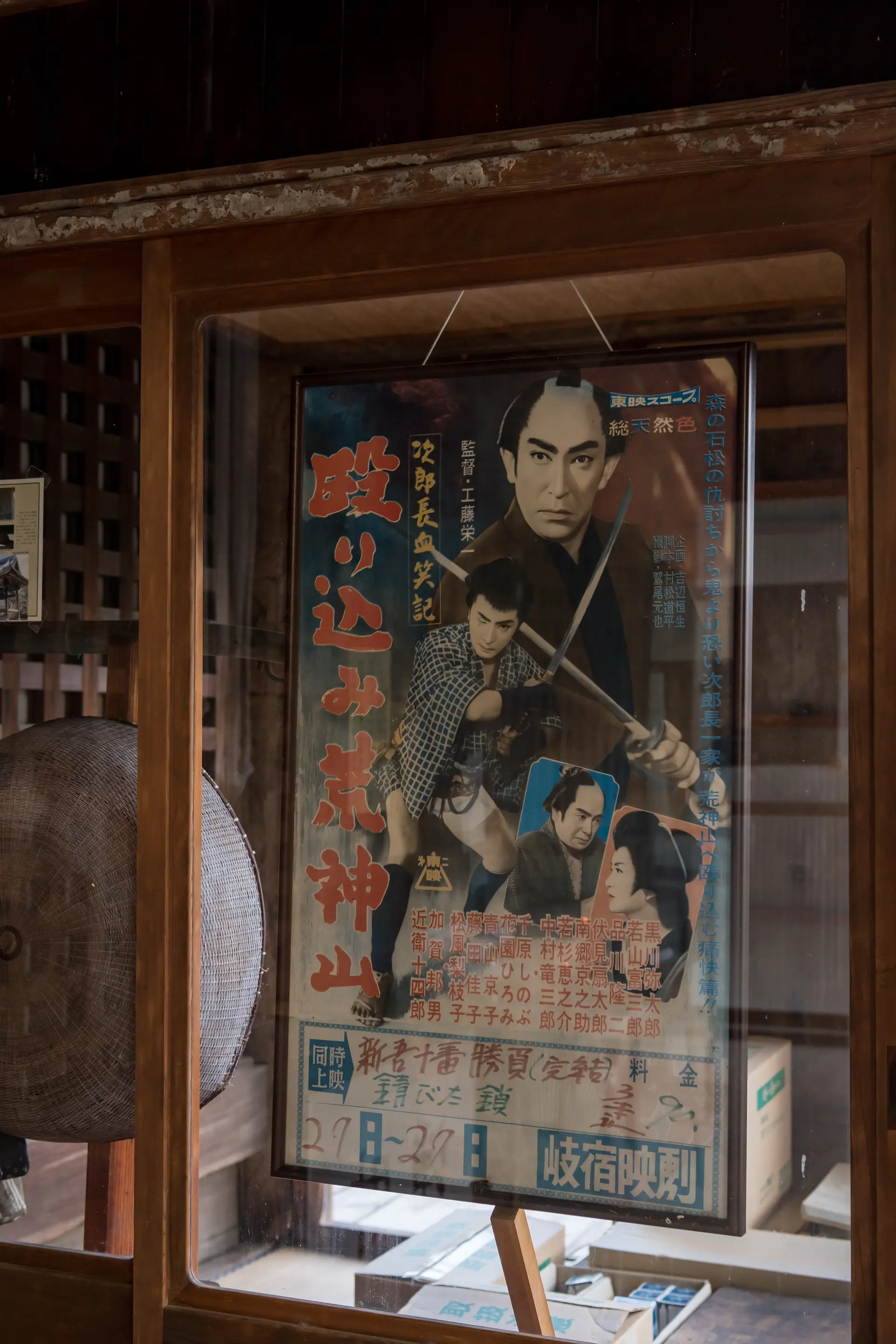
本堂正面の右手には、『次郎長血笑記 殴り込み荒神山』という古い映画のポスターがありました。
その隣には、仁吉を倒したとされる火縄銃も展示されています。
那智山(なちさん)石上寺(せきじょうじ)
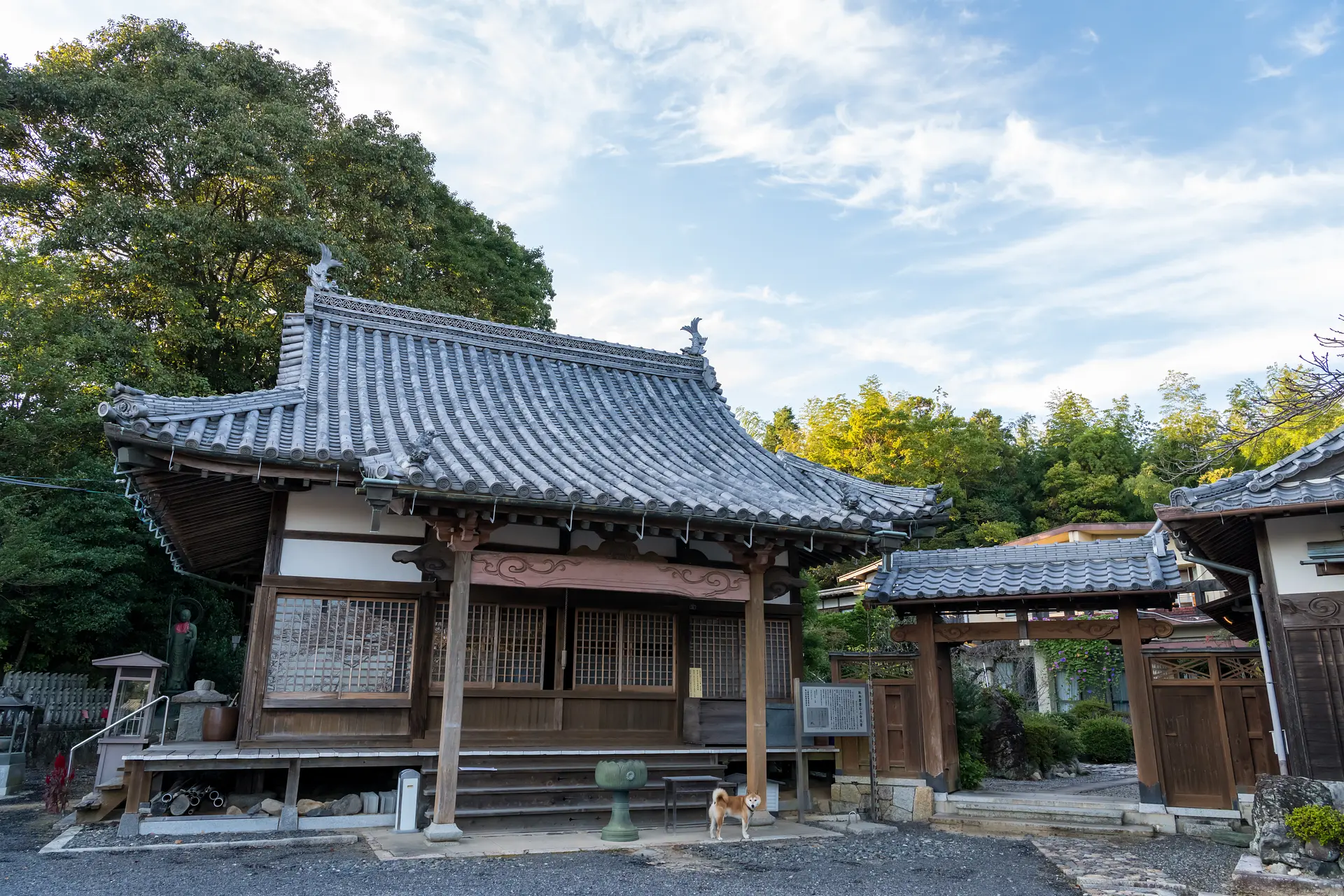
那智山熊野権現を勧請(かんじょう)し、新熊野三社として祀ったのが境内にある新熊野権現社であり、そこへ弘法大師が訪れて地蔵菩薩を刻み、一宇を建立し那智山石上寺と名付けたのだとか。
この日は、大人しいワンちゃんが本堂横で出迎えてくれました!
高野山真言宗
本尊 子安延命地蔵菩薩
御真言 おん かかかび さんまえい そわか
七福神 布袋尊
御真言 おん まいたれいや そわか
御利益 笑門来福 千客万来など
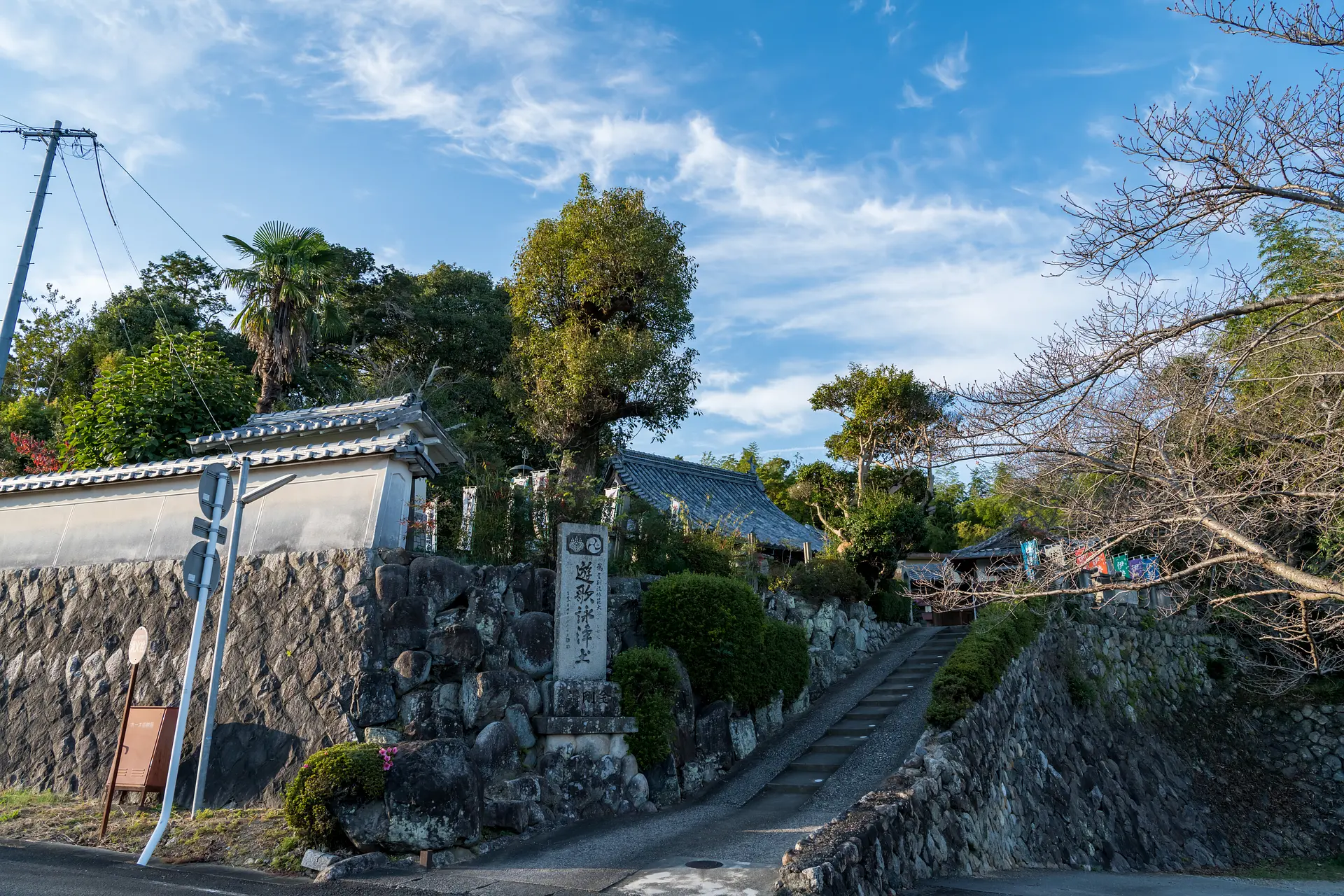
とても高く立派な石垣に圧倒されますね。本堂の更に上には権現社や聖天堂もあります。
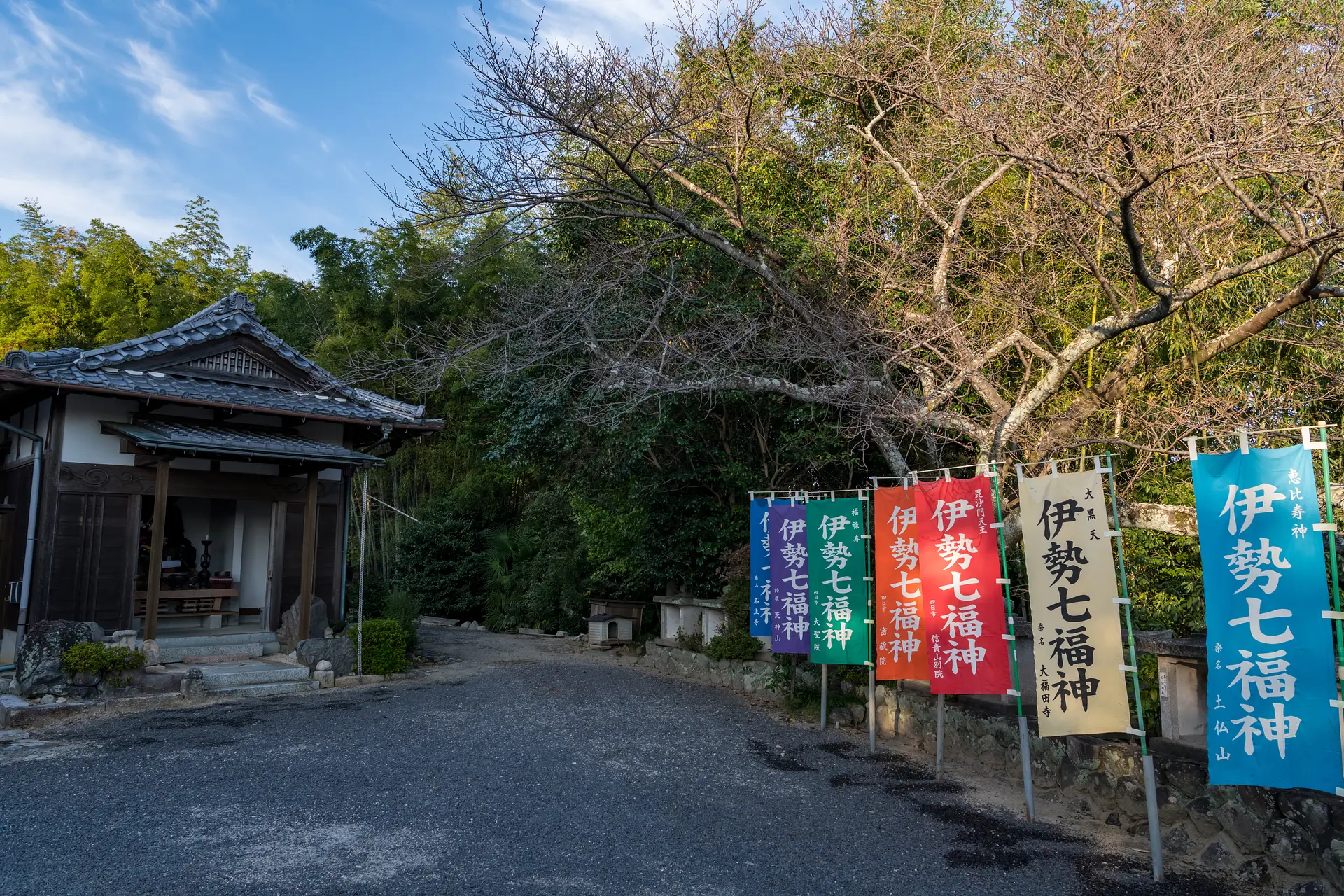
石段を上がると地蔵堂、七色の伊勢七福神の幟旗が並んでいます。
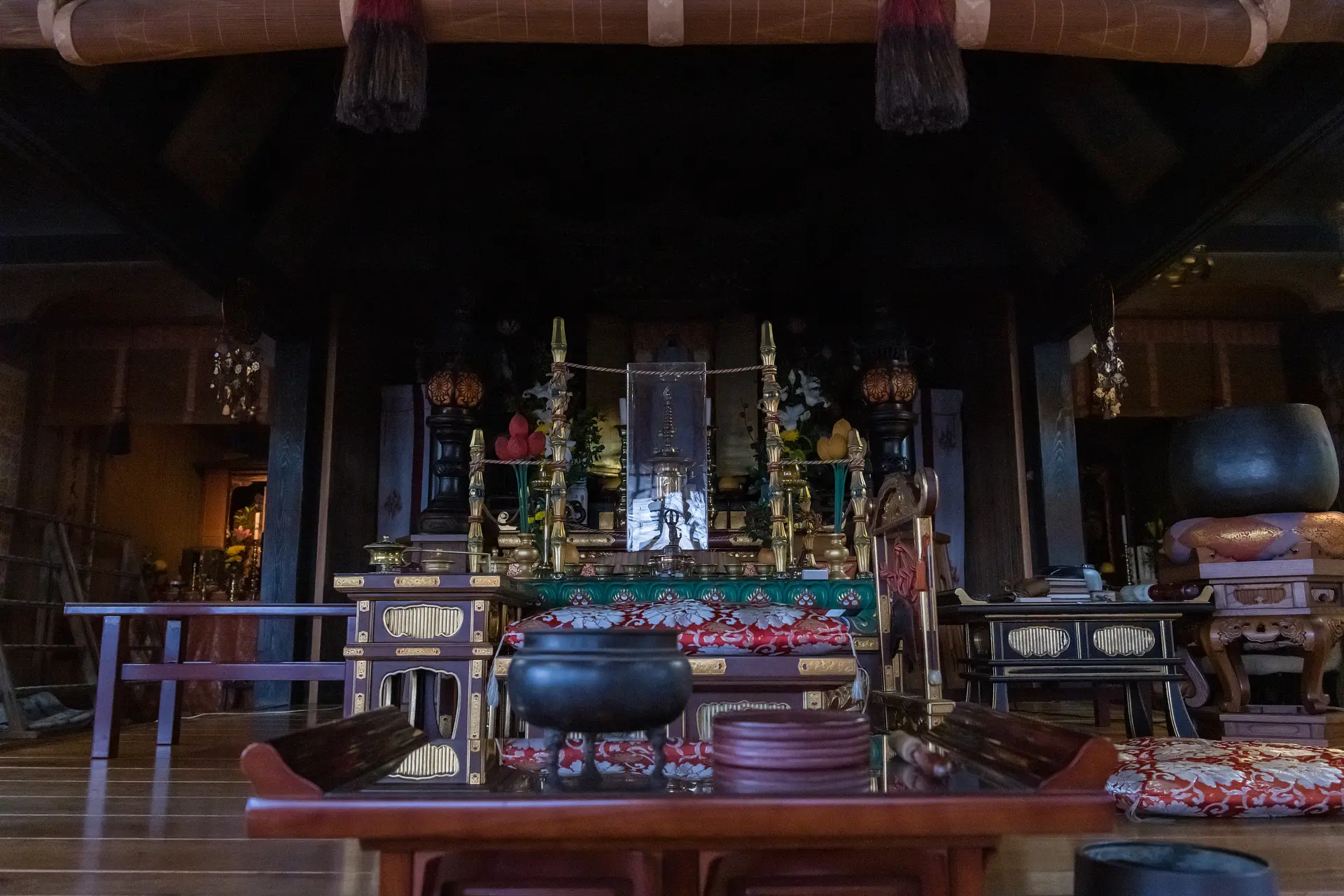
こちらが本堂内部。ご本尊様は子安延命地蔵菩薩様です。
そして、本堂左奥には布袋尊(ほていそん)が祀られています。
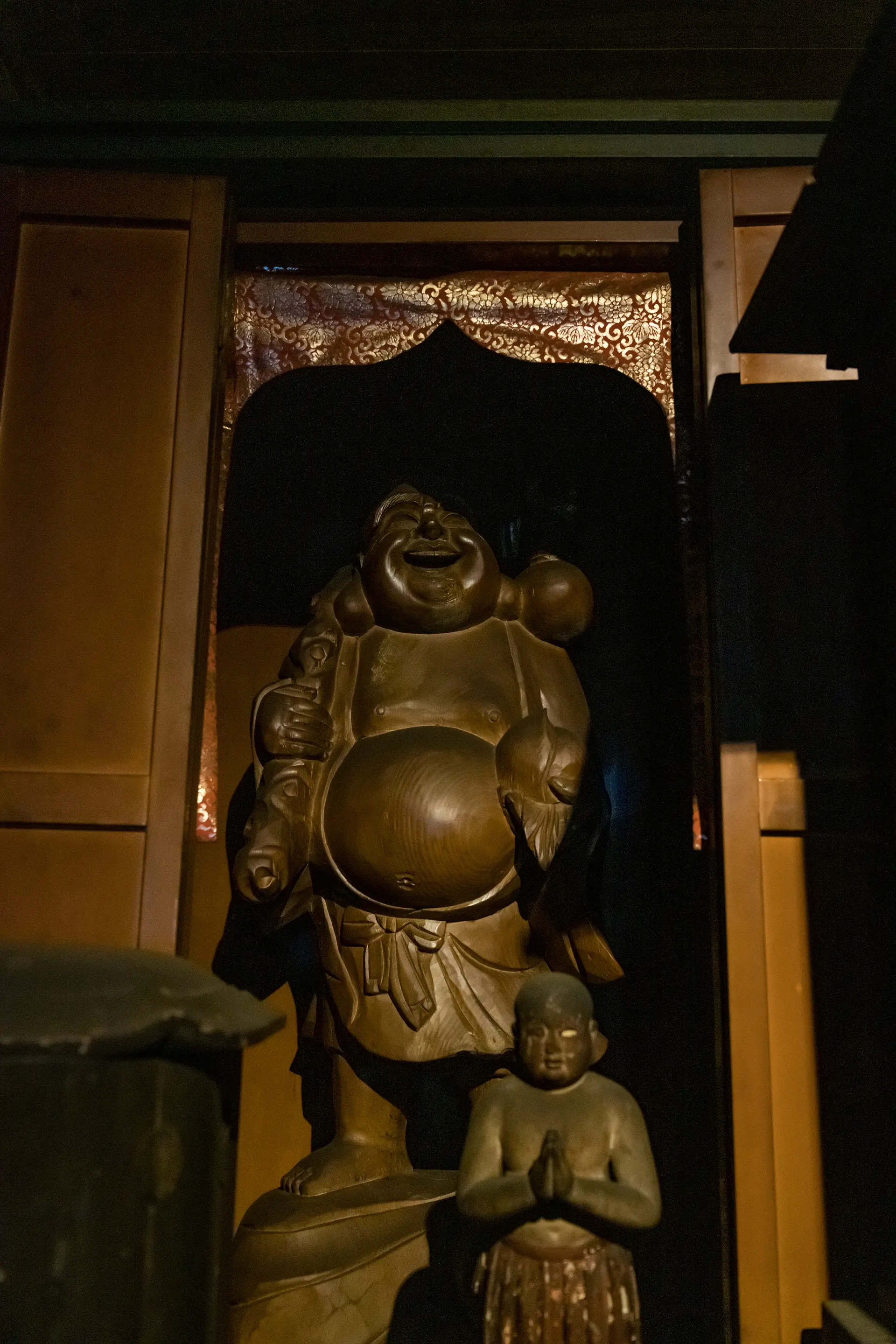
こちらが布袋尊。七福神の中で唯一実在した人物で中国の禅僧だそうです。
担いでいる袋は堪忍袋(かんにんぶくろ)と言い「堪忍袋の緒が切れる」という言葉はここからきているそうです。
手前にある聖徳太子二歳像も存在感がありますね。
まとめ
伊勢七福神巡りはいかがでしたか。七福神の御利益は御朱印色紙にも書いてある様に「七難即滅、七福即生」数多の災難は忽ちに消滅し、多くの福徳に転ずるという考えから七福神信仰が生まれたそうです。
今回ご紹介した七福神の御利益は主なものですが、調べてみると本当にたくさんの御利益があります。同じ仏様でも姿形が違うとその御利益までも変化するので、そういった事も知りながら仏様を観るとまた今までと違って見えて面白いと思います。
「お寺や霊場って、ちょっと行きづらいな…。」なんて思わずに是非お出かけください!きっと良いことがありますよ。
拙僧の前回までの記事は此方からどうぞ!

.png)
